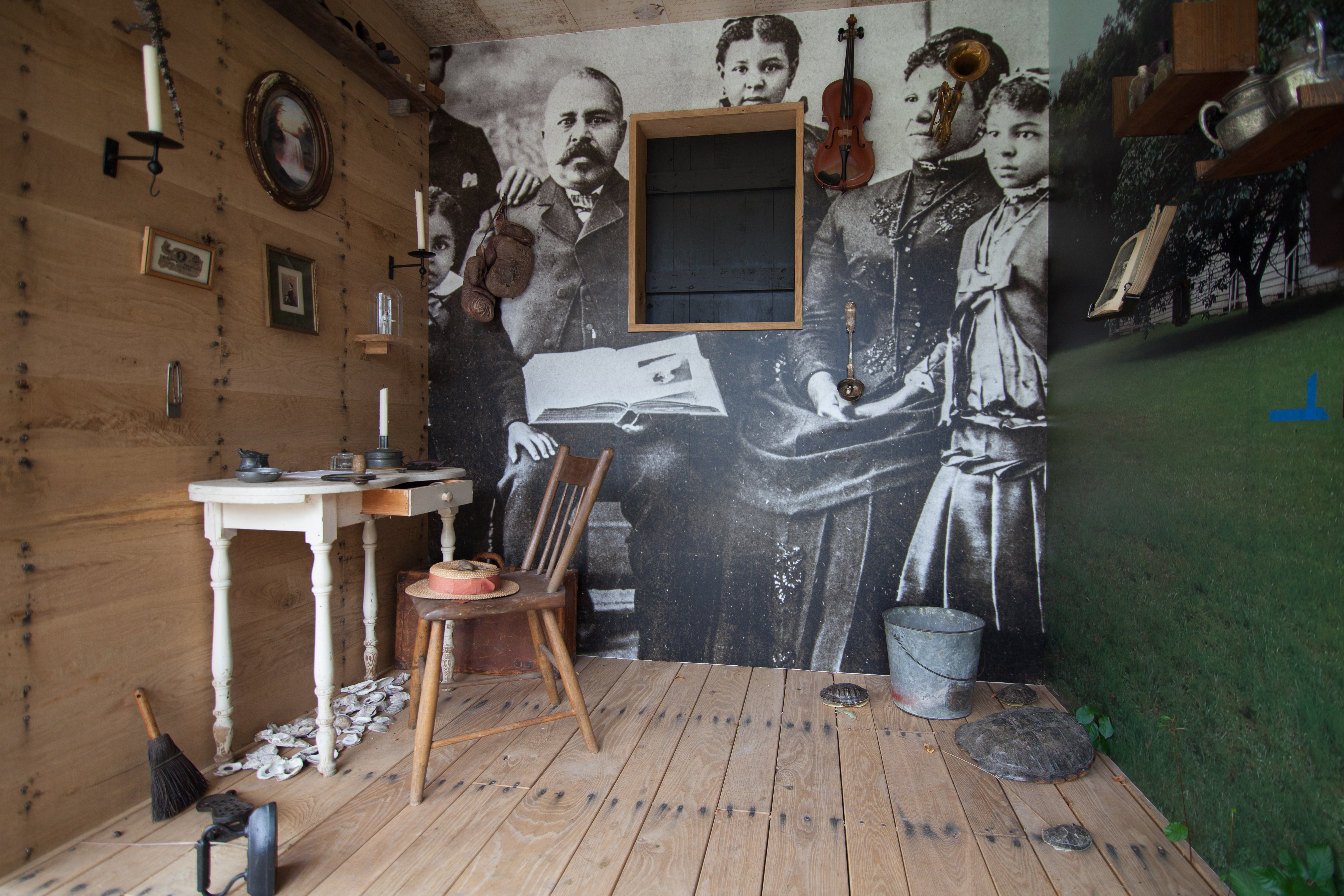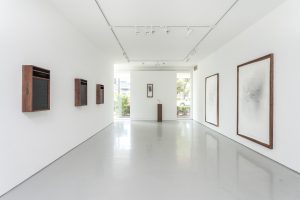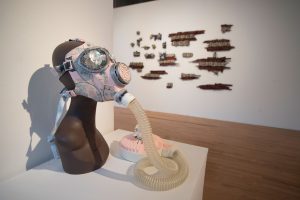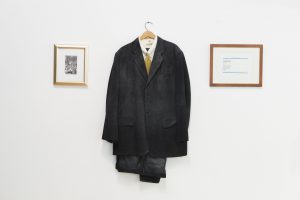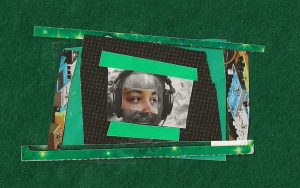Art is affecting and hope-filled, expressing all the things words cannot. Cultural objects and experiences hold the power to reveal what is hidden about the world and ourselves, and artists act as conduits to these truths. While their ability to translate knowledge through visual and temporal experiences is remarkable, let us not forget that art, at its core, is a technical skill that requires practice and study like anything else.
I spend a lot of time visiting artists’ studios, learning about what factors inform their practice, and thinking about how their encounters with me might affect the objects they ultimately create. Creating community and generating dialogue through art is the ultimate human negotiation, a relational push-pull and give-get. The artist’s studio is a system, a constellation of ideas, people, and decisions that ultimately influence the objects and experiences produced. Recently, I met Chicago-based maker, curator, writer, and educator Fo Wilson. Welcome to the conversation!
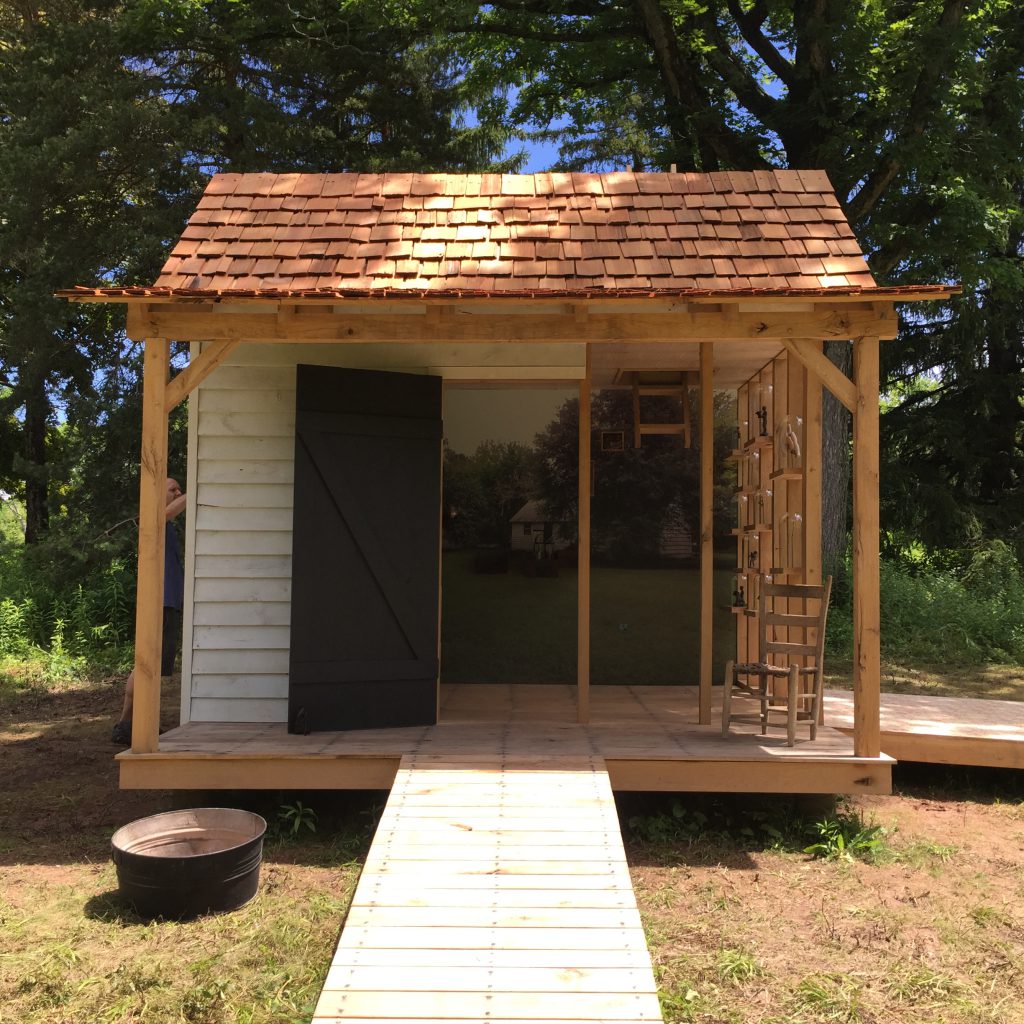
Lee Ann Norman: Let’s start at the beginning: How did you get into art and decide to make it a career?
Fo Wilson: That’s such a hard question to answer . . . I think, from childhood, I always liked to do things with my hands. I don’t remember what age I was; I just remember my mother saying, “Whatever you do, you’re going to be working with your hands.” I’d always be making something, or in the garbage pulling out discarded things. (laughter) I think she saw something. When I was growing up in the 50s and 60s, adults didn’t talk with children. They didn’t have conversations explaining things like parents do now. One day I was brought to our local art school and put into a drawing class. No one said, “We think you have some abilities that need to be nurtured, so we’re going to put you in this art class.”
LAN: Was anyone else in your family artistic?
FW: My father was a jazz musician until he and my mother had children. My brother studied trumpet after my father who was a trumpeter. One of my grandfathers was a sign painter, back in the day. I think I couldn’t help but be a maker. My first professional life was working as a designer and art director. It’s not like I abandoned those skills – I still use them, but I don’t make work that way now.
LAN: How did you learn about design as a career? When you were young and your parents took you to that class, you were interested [in arts], and you went on to complete other classes, but did your teachers talk to you about something called “the graphic arts?”
FW: I think my first awareness of design was the George Nelson [slat] coffee table my parents had. I’m sure it was a knock-off (laughter), but that’s where all our magazines and newspapers were. My father also read every Sunday newspaper and magazines. He had a subscription to Black Enterprise. There was an article [I read] about their art director, Ed Towles. He was the first art director there, and [this feature] explained what he did, how he commissioned artists and photographers. I thought: I want to do that. I ended up working for Black Enterprise later. Who thought that would have happened, but it did!
LAN: You had an epiphany moment [about what you wanted to pursue artistically] reading about his work, and you kept drawing…
FW: You know, I don’t think that I draw very well at all. Drafting, yes. I love to draft, but I don’t draw [representational work] very well. I don’t do it enough. I think art became more present in my life as I got older, though. During graduate school, I thought I would study furniture design from a product perspective. I couldn’t make up my mind if I wanted to study art history or pursue a making practice. When I was deciding which program to pursue, I met [painter and art historian] Freida High Tesfagiorgis. I was talking with her about my dilemma of deciding between being an historian or a maker. She told me that if I was going to be an art historian and make art, my peers wouldn’t take me seriously. She said that [as an historian] you are under pressure to produce books. But if you’re an artist who writes, it adds a legitimacy to your work. I decided I’d do that. The two are equal to me, so I would never privilege the academic side of my work. I think in my studies of art history, I became more interested in the power of objects to tell stories. It became a great way to bring my love of history together with my making and use making as the product of my research. I use an art historical process, but my product is art. It’s the same process that someone would use for researching and writing a book.
LAN: This makes so much sense to me after you describe yourself as the kid who was always going through the garbage, making things, tinkering. You strike me as curious and filled with a sense of wonder, so a research component would be important to the work you do. You thought the manifestation of these interests might be through product design, though. Was it the interest in research that prompted you to think that maybe you didn’t want to work with those kinds of objects?
FW: Well, as it turns out, furniture design – that kind of making – is coming back into my world. I feel I have been pursuing parallel paths. I am working on a small collection that I hope to finish when I’m on sabbatical next year. The pieces are functional, but still playful, expressive, and artistic. I’m trying to bring those ideas together. I’ve also been curating a lot of design shows – there were two in the last six months. Design is very much a part of the work I do.
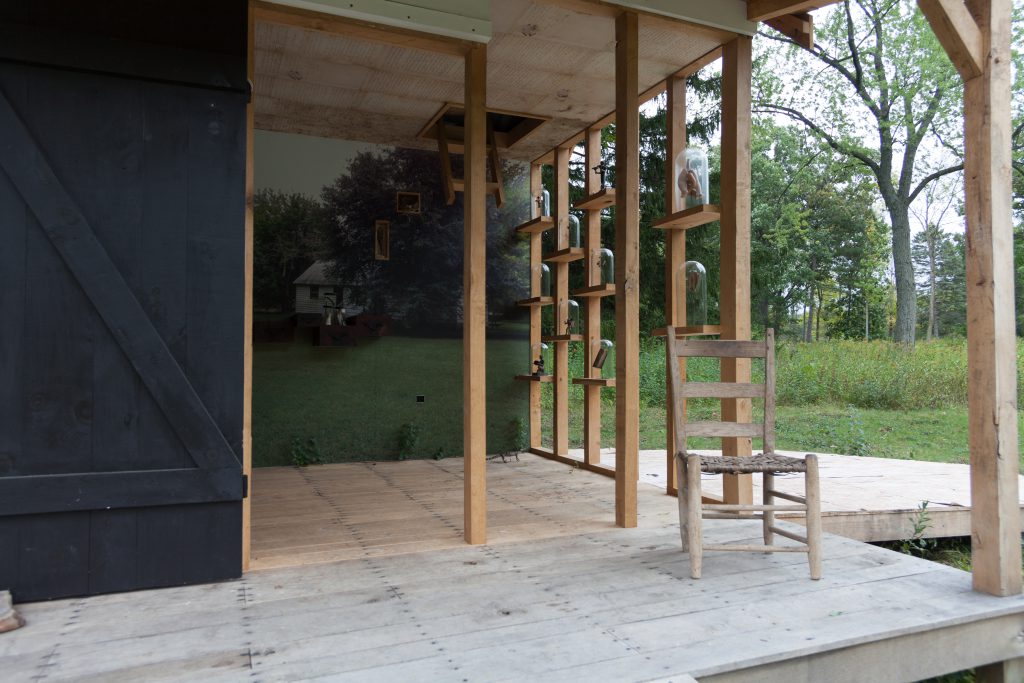
LAN: I spent the last year observing, learning, and writing about the practice of two designers. What was interesting for me about that process is that there is a lot of crossover [between design and art]. Designed objects can have an aesthetic dimension that has nothing to do with their usefulness.
In the installation Eliza’s Peculiar Cabinet of Curiosities, you’ve built a replica of a slave cabin. It’s an extensive investigation where you imagine what Eliza’s home might be like, what objects might she collect, even though there are constrictions on her life, her freedom and ability to make her home feel like a home. Can you talk a bit more about this work?
FW: That project has been about 10 years in the making, and in its current incarnation, it’s the biggest and most complex project I’ve done. This fictional character, Eliza, who is a thread through the work, is a curator, collector, and kind of a shape-shifting Afrofuturist. There was a lot of research involved. I almost think about her time – just before the civil war – as like ours now. There is a lot of change in the country around legacies of race and oppression. She is trying to make sense of her environment and interpret objects from her perspective. She’s turning around the Eurocentric gaze, and looking at this environment from her point of view. I positioned her as someone who travels through time, which gave me the opportunity to bring the present back to her, the past up to us, and have them converge. The installation is closed for the winter, but the Lynden Sculpture Garden where it’s installed will keep it available for the next two to five years. This gives me the opportunity to continue making new work for it and for other artists to respond to the work.
LAN: Some of the objects in her space are made by you, some are found…
FW: Right, and some of them are from other archives. There is a film I found from the Library of Congress of Ring Shouters. I edited a brief portion to display in the cabin in a very small monitor close to the floor so you have to get down to see it. There’s also a 19th-century copy of Uncle Tom’s Cabin. Eliza obscures this narrative by placing her own commentary on it; it serves as her log book of field notes. She’s also manipulated some of the images and illustrations in the book. Part of the exhibition in the gallery had audio archives from Voices of Slavery. They allowed me to combine those recordings with other original, found and edited audio to make a kind of environmental soundscape. (I collaborated with former School of the Art Institute student, Joel Mercedes to make this.)
LAN: The things she collects and the ways she alters the objects as she travels through time allows us to see history through her eyes. The more we live the more we experience, which contributes to the ongoing formation of our identity. This also speaks to the notion that identity is layered.
FW: And that we are also our ancestors. We not only bring our history with us, but also bring that of the ancestors. It’s what we are dealing with now in the present state of America.
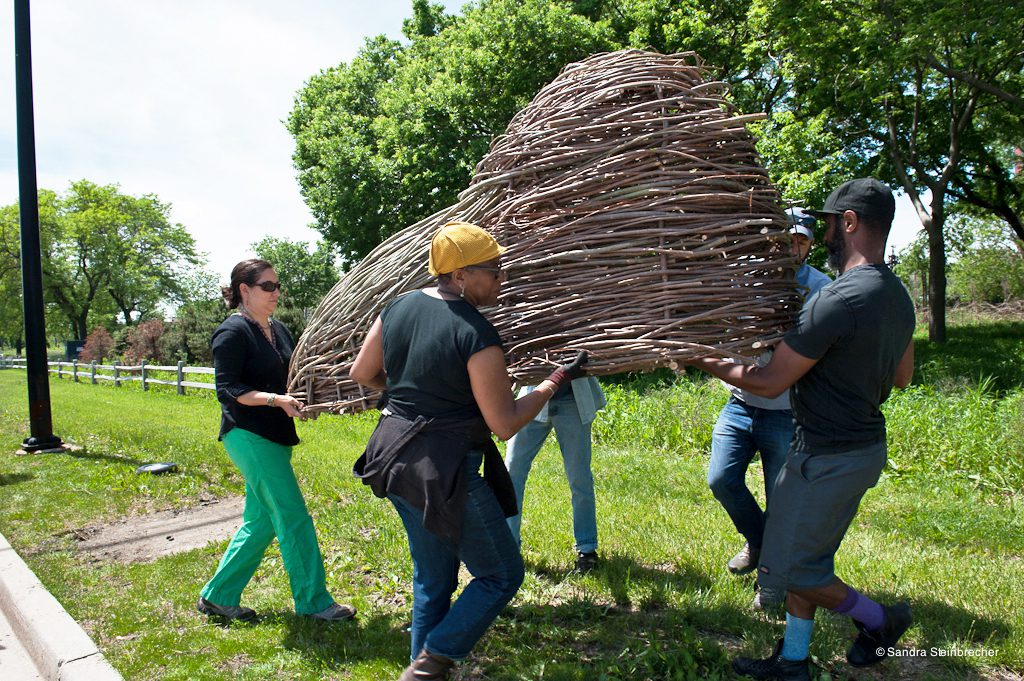
LAN: You also have an interest in architecture, which is present in the Eliza work, but also in a project you completed in Bronzeville.
FW: Yes, Sounding Bronzeville was Chicago Park District commission with the Field Museum. They’ve been working to restore native plants to the Burnham corridor so wildlife will return. Myself, Norman Teague, and Chris Buchakjian led the team to determine what we could make that would be a place people wanted to engage with and would complement the landscape. Willow is an inexpensive material and something we could collect and learn how to work with quickly. We hired a consultant to teach us how to collect and work with the material. We designed some seating and sculptures. We also had a landscape architect design plantings. It will be up for about two-to-three years, and we have a curator, Larissa Johnson, who has been organizing programs like nature walks, bird watching, and music events. We wanted to connect the sound of nature to the sound of Bronzeville because there is such a connection to the migration of birds and the Great Migration, which was celebrated last year. Our partner, the Bronzeville Community Partnership, has been great in developing the programming.
LAN: You’re also interested in ideas of nostalgia . . . In some ways, I think we have to forget to remember. History is told by the victors, and then it’s up to us [to choose] how we engage that history. The P.S. I Love You series, where you’re altering postcards and historic memorabilia that we look at now and deem racist, highlights this embracing of history. We shouldn’t be ashamed of that memorabilia because history is comprised of good and bad things. When you’re going to flea markets looking for objects, particularly for this series, are there certain things you’re drawn or that inspire you? Do you have a method to gathering the material you use to produce the work?
FW: I think it might fall into categories. I like things that show their age, things that are unusual. One of the objects in Eliza’s collection, for example, is a deck of cards with four suites of farm tools instead of hearts, spades, clubs, and the characters on the cards were part of a family. When I was looking at the characters, I noticed one was a dandy, a black man. I thought this was unusual, so I purchased it. There are other things that are very specific to the time I’m researching, like the buttons and bullets I collected in Savannah. Some things I’ve had for a while. I’m a hoarder (laughter) and collect stuff. It’s kind of an intuitive thing.
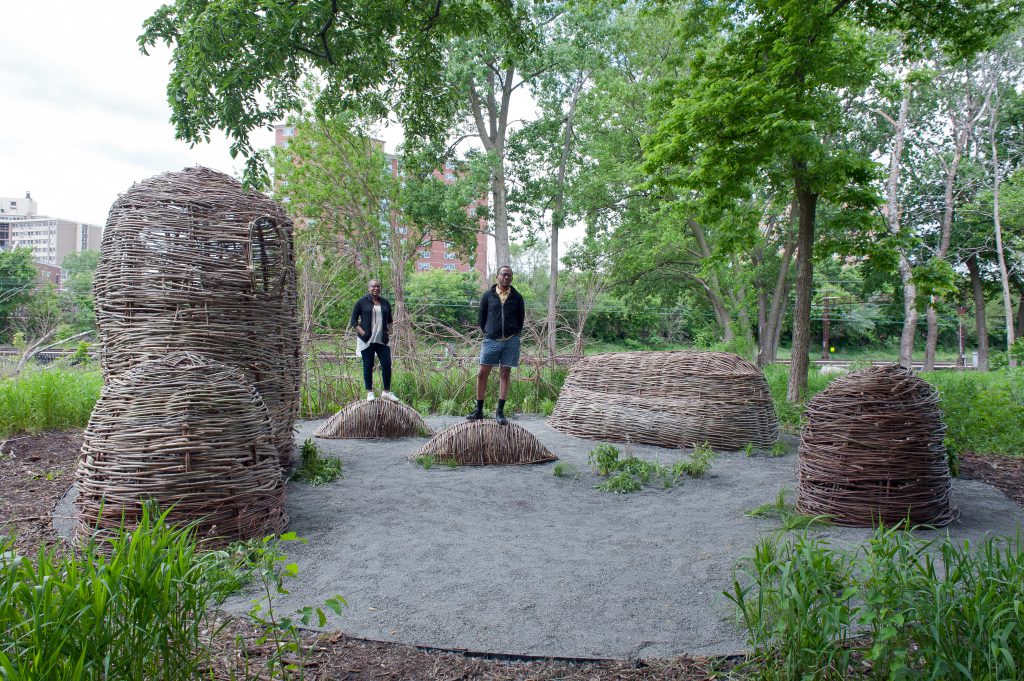
LAN: Besides continuing work on these projects, are there other things that you’re planning?
FW: On the design side, my collaborator Norman Teague and I have several projects as part of our informal design studio: a project in Greater Grand Crossing where we are designing furniture and an entryway for a community garden, and work in Guatemala. We recently took a trip there at the invitation of an organization – Mayan Families – who are looking to increase the skills of local Guatemalans, mostly in their wood shop. I’m also working on a few curation projects, and looking forward to my sabbatical starting this fall. I have the possibility of a solo exhibition in 2018-19. I want to just be in my studio consistently – I have sketch books filled with ideas, and I just need the time to work through them, get them out of my head.
LAN: Your practice is multifaceted. You’re a professor with a design and curatorial practice alongside being an artist. Of course, these things are related, and it’s quite common for many artists and creatives to wear multiple hats, but it’s tough. How do you find a balance with it all?
FW: I just work all the time. (laughter) These are things I want to do; it’s invigorating. My work is very satisfying.
This interview has been edited for clarity and length. To see more of Fo Wilson’s work, visit her website at fowilson.com.
Featured Image: Eliza’s Peculiar Cabinet of Curiosities at Lynden Sculpture Garden in Milwaukee, Wisconsin, 2016. Photo courtesy of the artist.
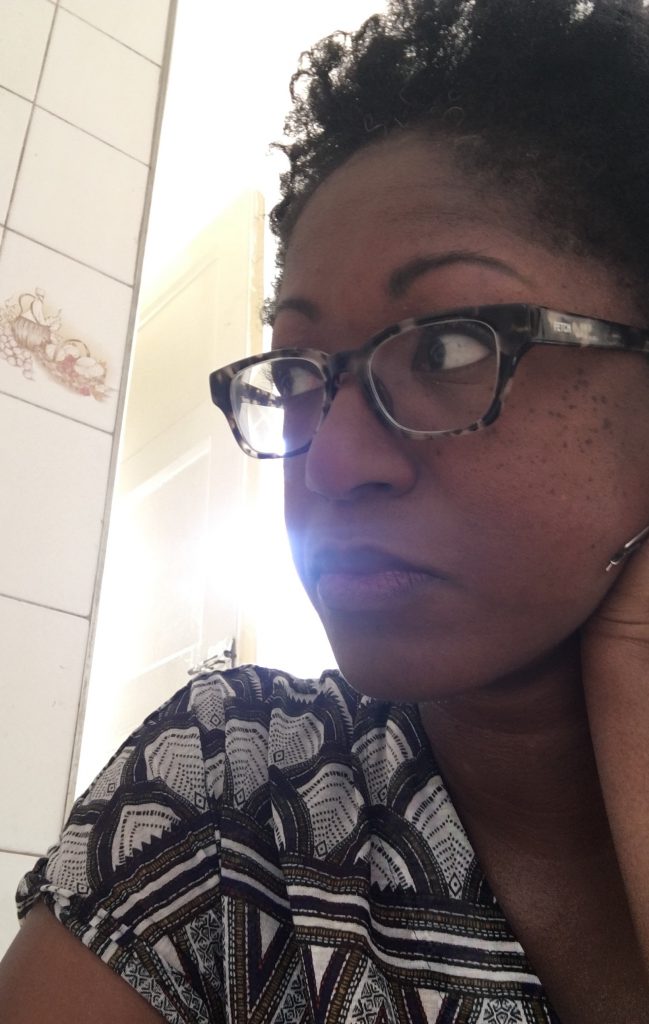 Lee Ann Norman is a writer and culture maker who works between Chicago and New York City.
Lee Ann Norman is a writer and culture maker who works between Chicago and New York City.
